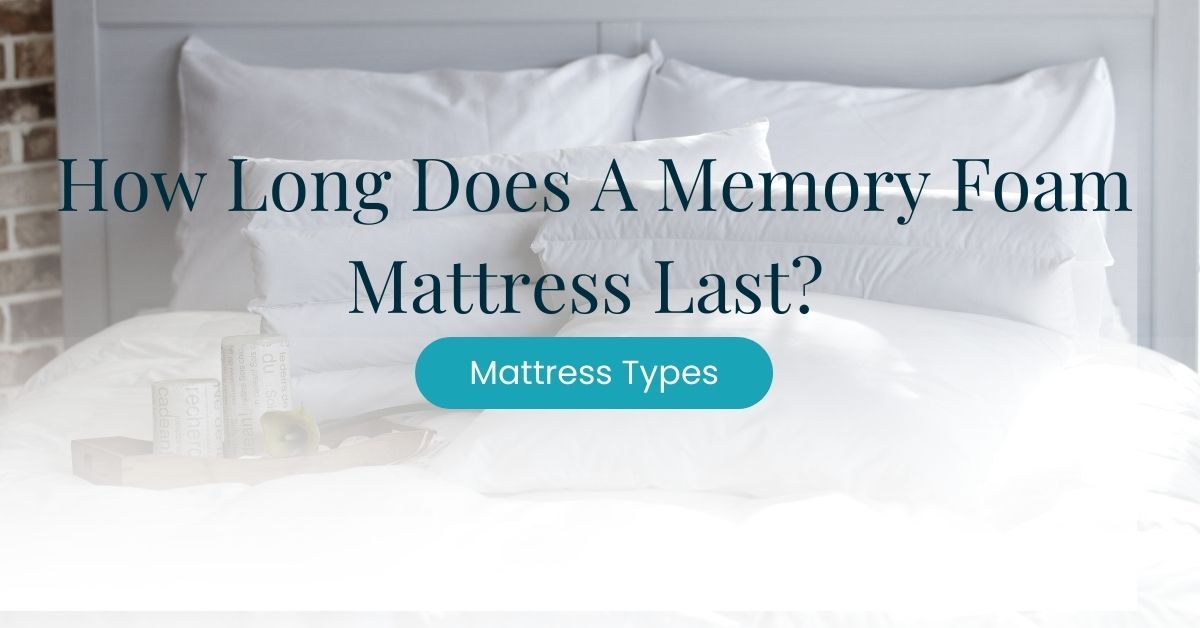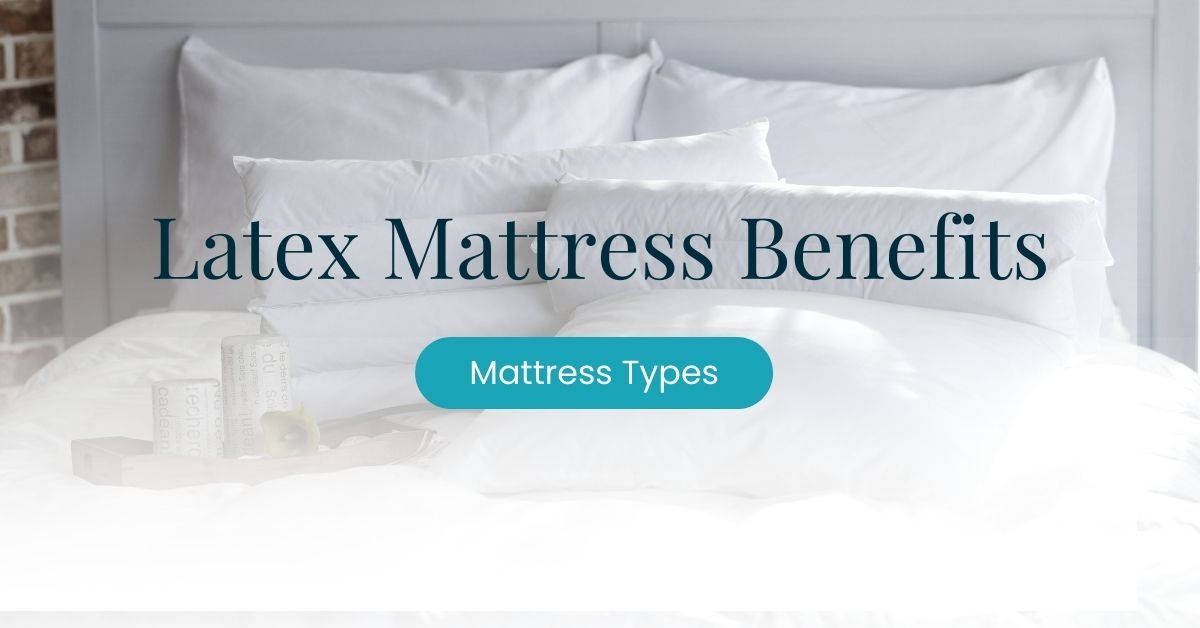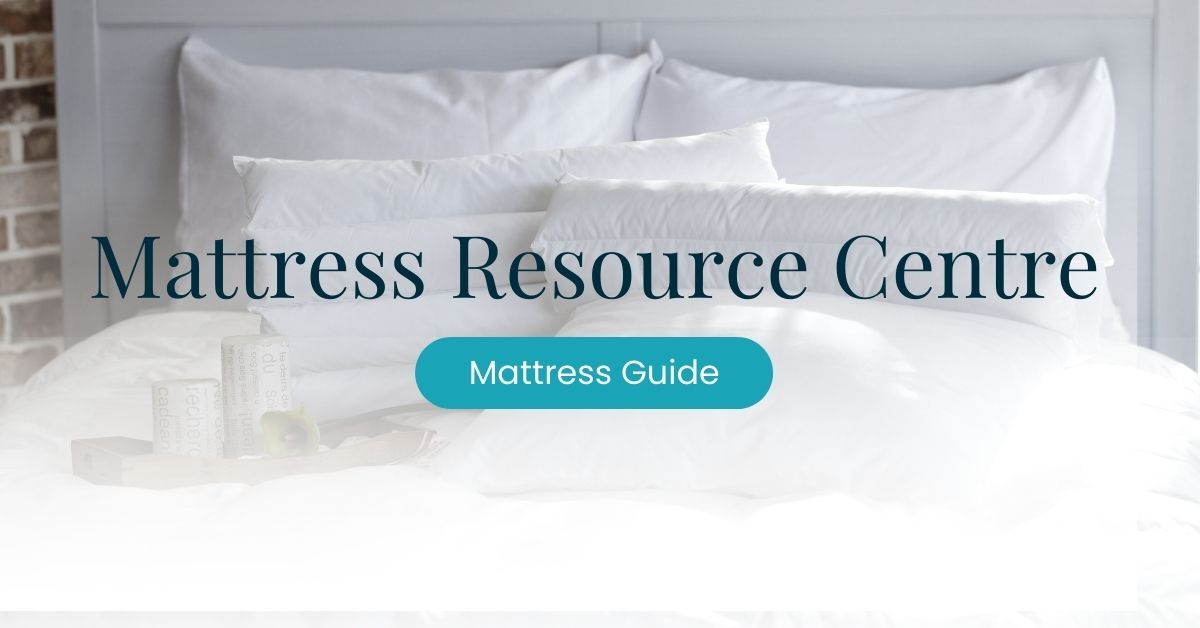Memory foam mattresses have an average lifespan of 7 years based on a survey of more than 25,000 mattress owners, but higher quality models can last 10 to 15 years.
I’m sure you love your memory foam mattress’ hugging comfort. As much as you want it to last forever, its better years may already be behind it because of its age or change in quality.
The lifespan depends on:
- frequency and manner of mattress cleaning
- frequency of use of the mattress
- mattress quality
- weight of the sleeper
- method of care and maintenance
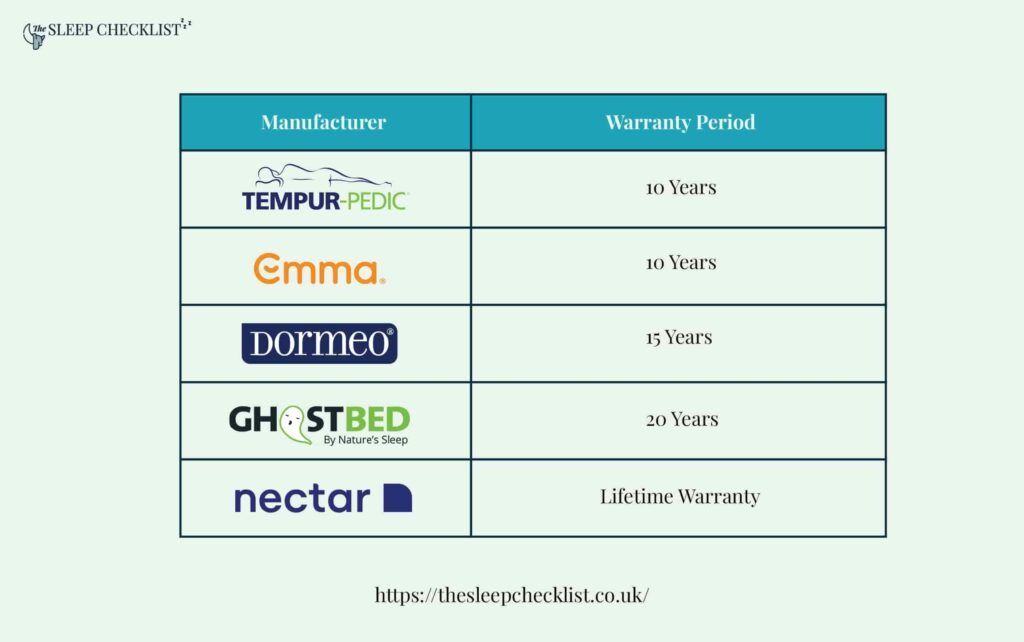
This guide will discuss how long a memory foam mattress typically lasts, how to extend the lifespan, and when to replace a memory foam mattress.
Memory Foam Mattress Warranties
One way is to look at the mattress manufacturers’ warranty periods. This means that these manufacturers test their memory foam mattresses to last that long. They do this by using a big roller to simulate a sleeper, monitoring the memory foam’s firmness, and looking out for displaced stitching and loose ticking.
The warranty conditions usually include the care and maintenance instructions to prolong the mattress’s life. It’s then down to the user to properly care for and maintain the mattress.
But how do these manufacturers determine the warranty period of a how long their memory foam mattress lasts?
Memory Foam Density
Density refers to the amount of polyurethane foam in kilograms per cubic metre – higher density means more foam per cubic meter. The more foam, the more resilient the mattress is. In contrast, low-density mattresses lose their form and flexibility faster.
Regarding cost, higher densities normally come at a higher price because of the amount of materials used. This is why high-quality mattresses come at a higher cost.
While some manufacturers do not disclose the mattress density, like Tempur, you can get an estimate of a mattress’ density by dividing the weight with the mattress dimension, of which both you can get on the mattress’ label. Bring your calculators out:
Estimated Mattress Density = Mattress Weight ➗ (Mattress Length x Width x Thickness)
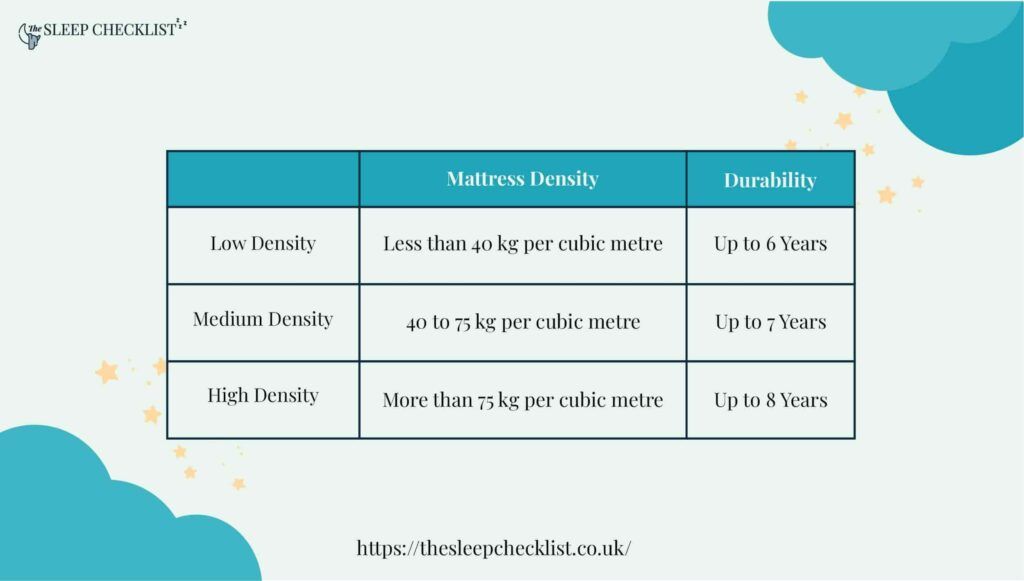
Mattress Firmness
The mattress firmness is the overall feel of the sleeper with the mattress. Soft mattresses that are constructed using plush materials often deteriorate faster because of the fillings used.
Although an advantage of Latex mattresses is they last longer than memory foam because a latex mattress lifespan is longer as it is more durable than other foams.
Mattress Layers
Some memory foam mattresses come with up to 10 foam layers which may comprise the
- Comfort Layer – This layer’s purpose is mainly for cushioning. This can comprise two to three layers: memory, gel-infused, or latex foam.
- Core Layer – This layer is the base of the mattress and is usually made out of firmer foam than that of the comfort layer as it gives support to the mattress.
 Editor’s Note
Editor’s Note
There are loads of different types of memory foam mattresses, but the ‘newest’ type is gel memory foam. Learn more about the differences between gel and memory foam mattresses.
The core layer will greatly contribute to the overall mattress’s durability as it supports the mattress. If the core layer is of low density, the memory foam bed would easily lose it resistance to compression.
Likewise, each foam’s density and firmness per layer will affect the durability and how it will support the sleeper’s weight over time.
How To Prolong A Memory Foam Mattress’ Lifespan?
Proper care for your memory foam mattress can prolong its lifespan and help you get a comfortable night’s sleep. Regular cleaning of your bed is the best option for this. Aside from regularly cleaning your memory foam mattress, here are some tips to ensure the longevity of a memory foam mattress:
Use a mattress protector
Mattress protectors come in various types, like waterproof and hypoallergenic mattress protectors.
- A waterproof one prevents any spills or liquid from penetrating your mattress.
- A hypoallergenic protectors work both ways by preventing allergens from penetrating your mattress and sealing in existing allergens.
Any liquid that may infiltrate your mattress will be hard to dry out, especially for memory foam. This can cause potential mould and mildew to damage your mattress and, even worse, results in having to throw it away.
Avoid Excessive Wear and Tear
A mattress that has only been used every week will last longer than one that used every day. While it is expected that a mattress will eventually wear out, taking extra care and avoiding the following actions will go a long way:
- Jumping on the bed
- Placing heavy objects like weights, books, or luggage on the bed
- Using the mattress as a standing platform
Proper Mattress Foundation and Ventilation
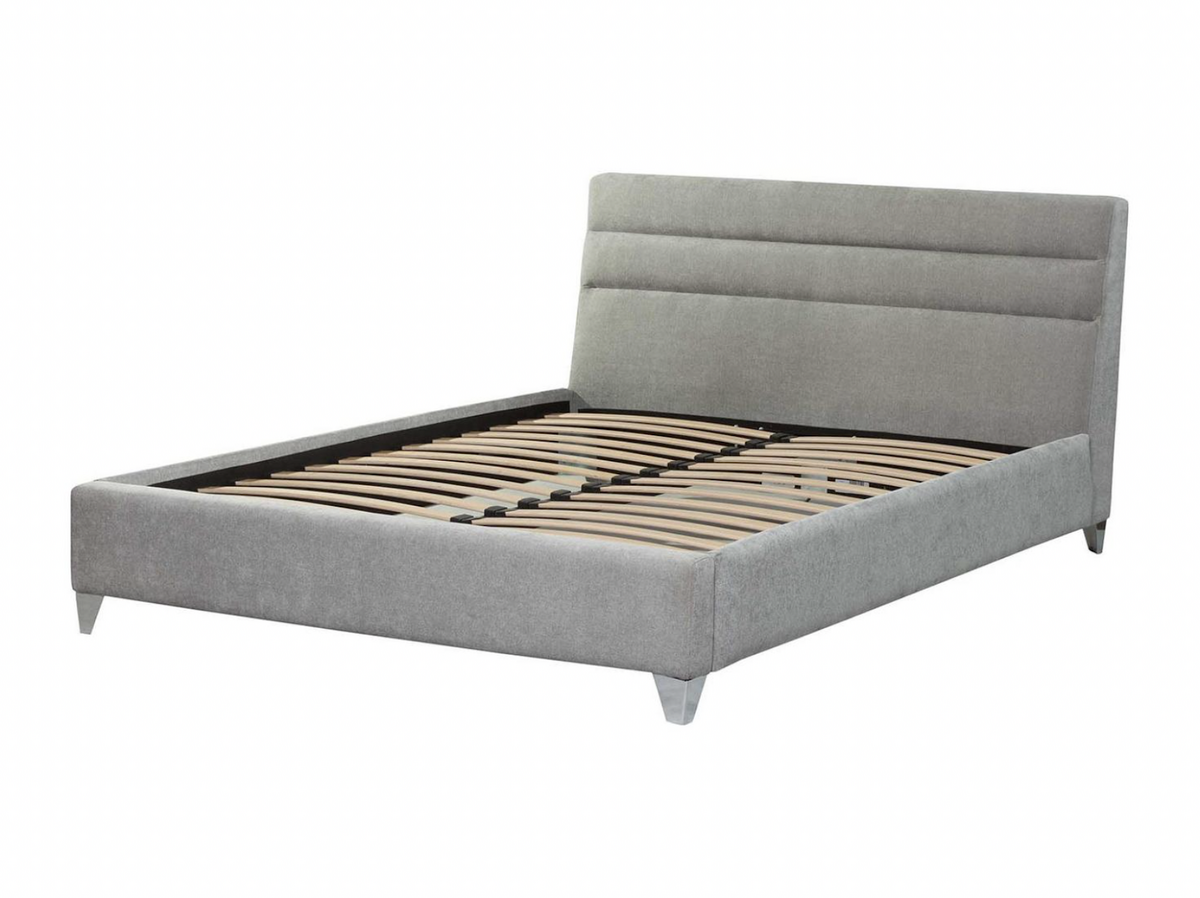
A good foundation helps the memory foam to breathe and promotes ventilation as the foam tends to get hot from absorbing your body heat. The best foundation for memory foam is to use slats as the additional space between each slat is where air can flow through.
You can also opt to open the windows and occasionally turn on the electric fan to let the mattress air out. This will help prevent odour and moisture buildup that can potentially ruin your mattress.
Rotate Your Mattress
Rotating your mattress every 3 to 6 months can help prevent permanent body indentations and wear and tear. Simply turn the mattress 180 degrees to provide a ‘new’ sleeping surface to lie on.
Doing this simple trick can really help with memory foam, just make sure to read the manufacturer’s own care guide before proceeding with anything.
When To Replace Your Memory Foam Mattress?
The average lifespan of a memory foam mattress is 7 years. But is this the time to replace your mattress? Can it last longer and what are the signs that you need to replace it?
Well, it all depends on if it’s been properly maintained and designed to last that long. Here are the 8 signs that your memory foam mattress is worn out and might need replacement:
- Sagging
- Hurts your back and body.
- Takes longer than usual or does not return to its original shape.
- Is not supportive enough, and you sink on the bed.
- Mattress has mould growth
- Infested with bed bugs.
- Doesn’t give you a good night’s sleep.
- Aggravates allergies.
Do Memory Foam Mattresses Last Longer Than Spring?
A memory foam mattress can last longer than innerspring mattresses, with both lasting 8 years and 6 years respectively. This is mainly because the coil springs risk breaking and rupturing the mattress surface. Springs also lose their resistance over time and can cause premature sagging and indentations on the mattress.
Check out our guide on how long a mattress lasts to compare all the different types of mattresses.
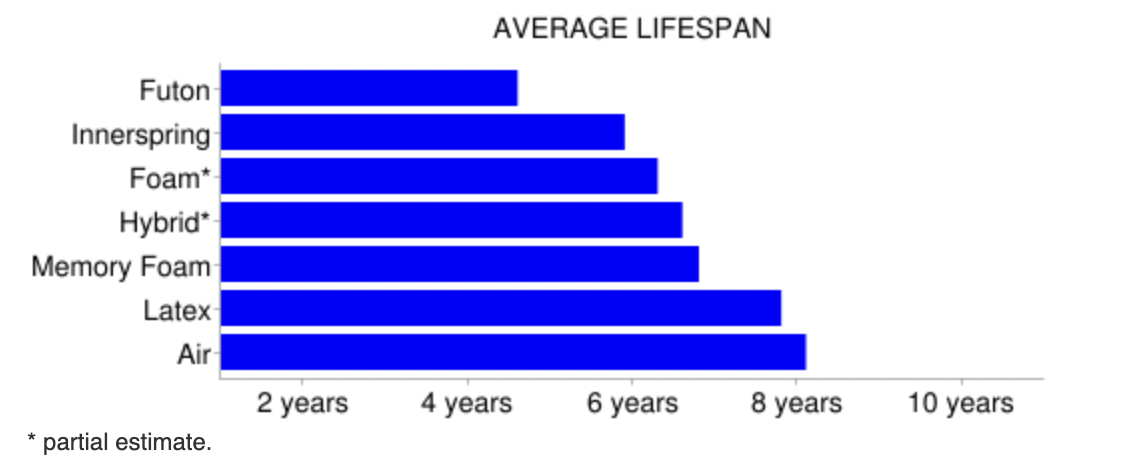
Take Action: Weigh Up Your Options And Buy A New Mattress If You Need
Now you know the answer to how long do memory foam mattresses last, how to prolong its life, and when it’s time to replace it, it’s time to take action.
When looking for the best mattress to buy for you there’s a lot of factors to consider which can be daunting. We always recommend starting out trying a hybrid mattress or for a longer lasting high-density memory foams or polyfoams. Check out our best memory foam mattress guide where we tried, tested and reviewed each product!
1 Sources
- Mattress Longevity / Lifespan Comparisons. (2017, April 7). Retrieved from Sleep Like the Dead:
https://www.sleeplikethedead.com/mattress-longevity.html


